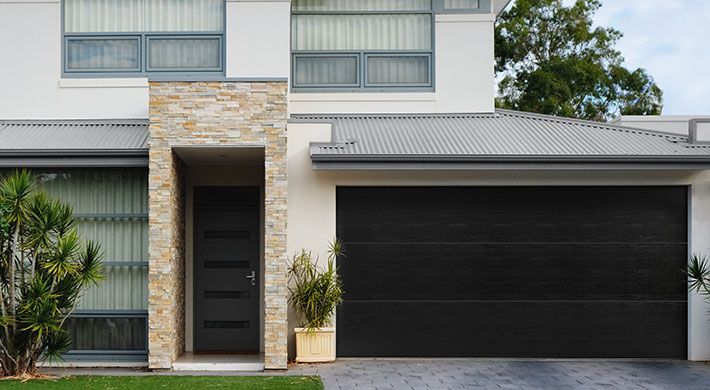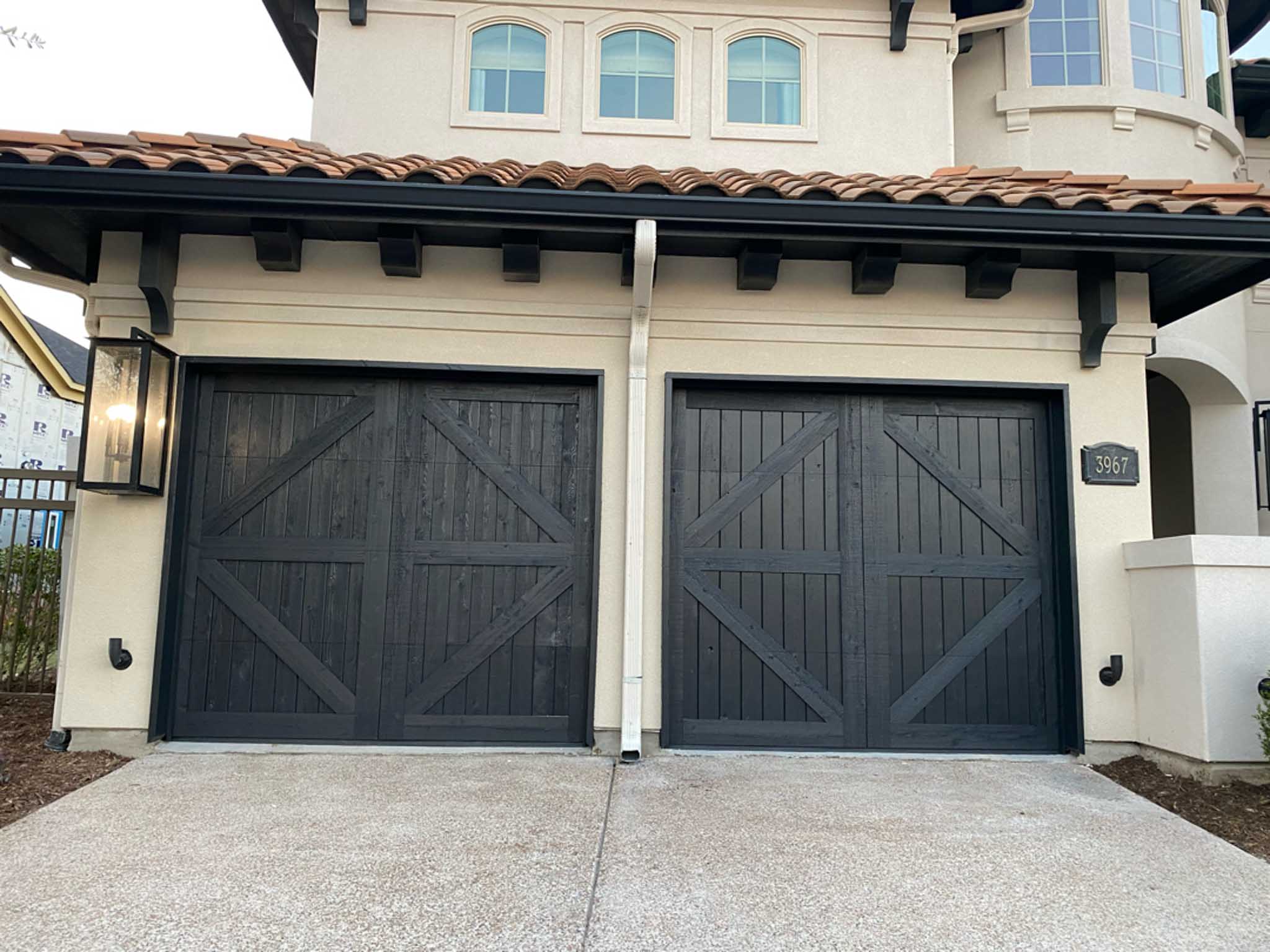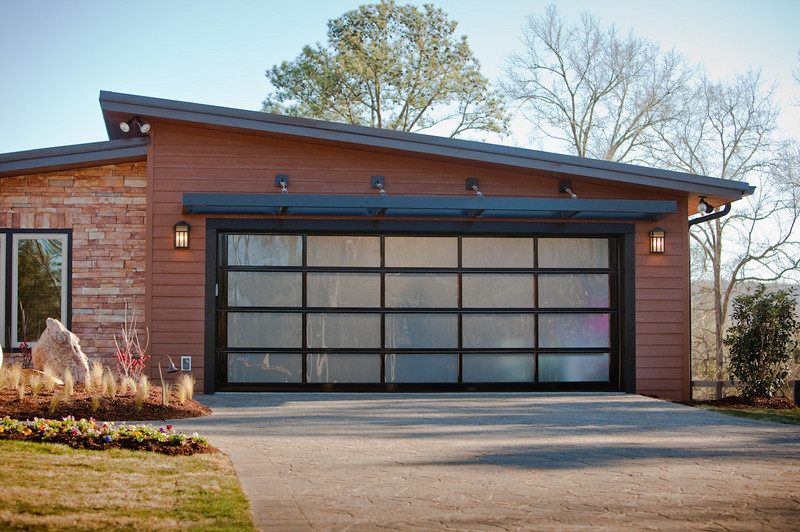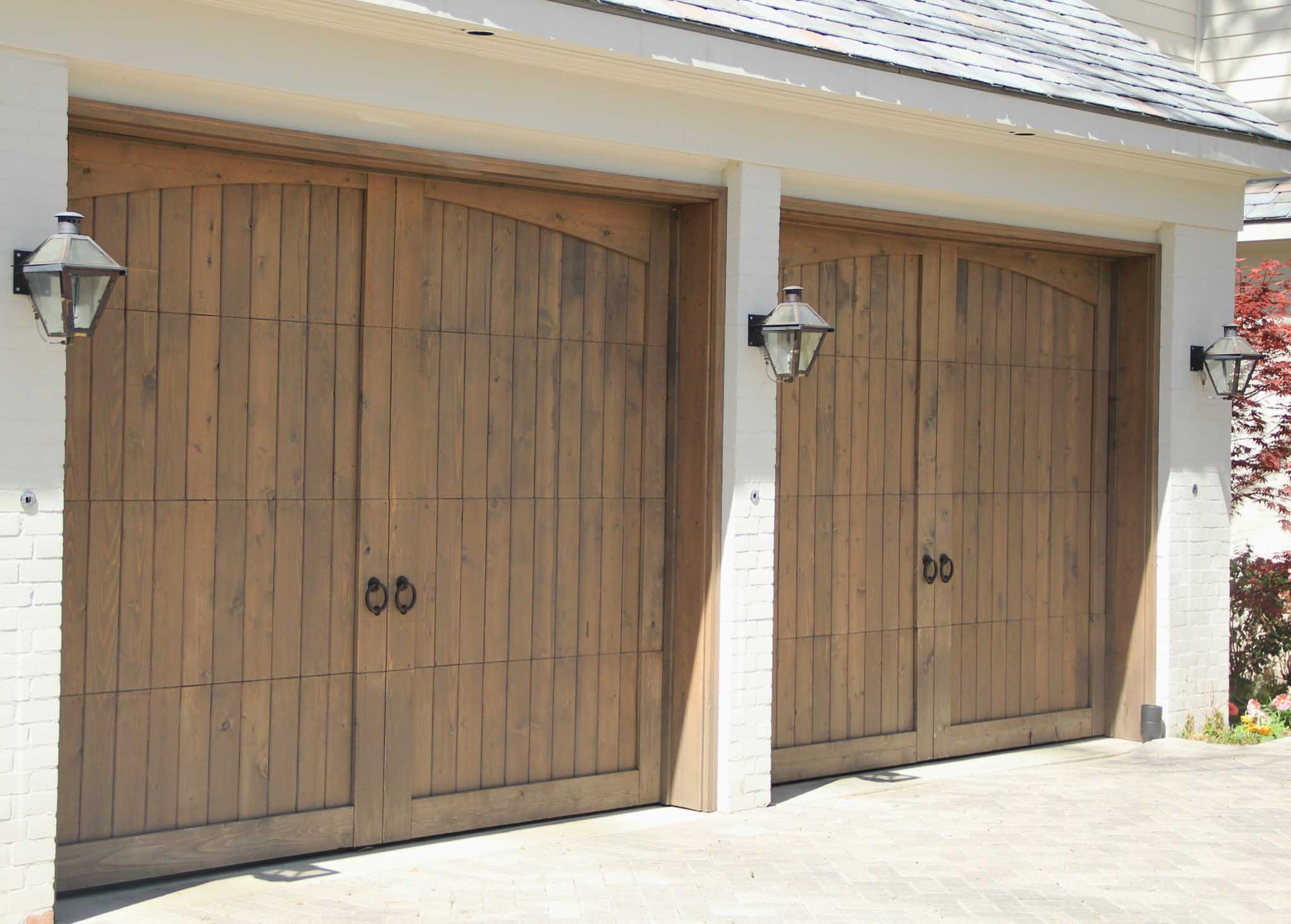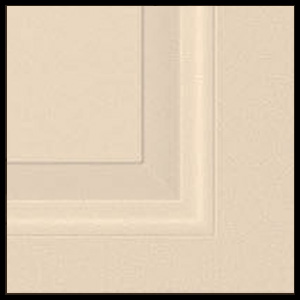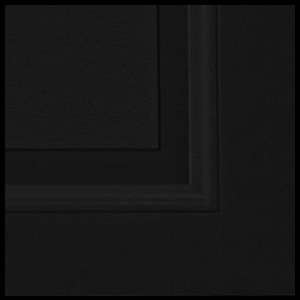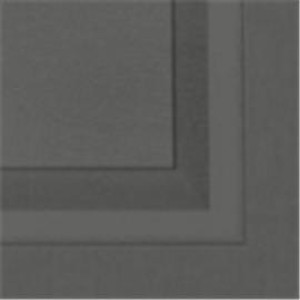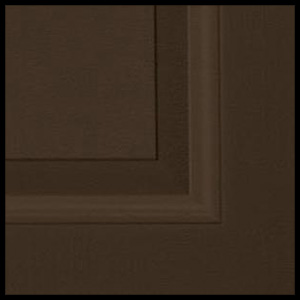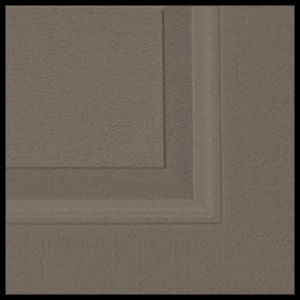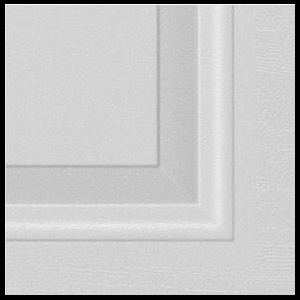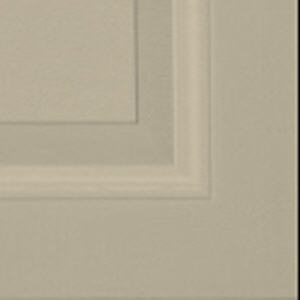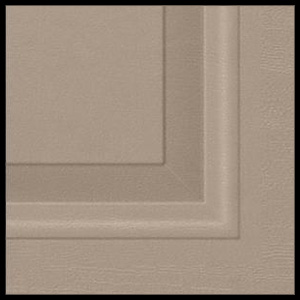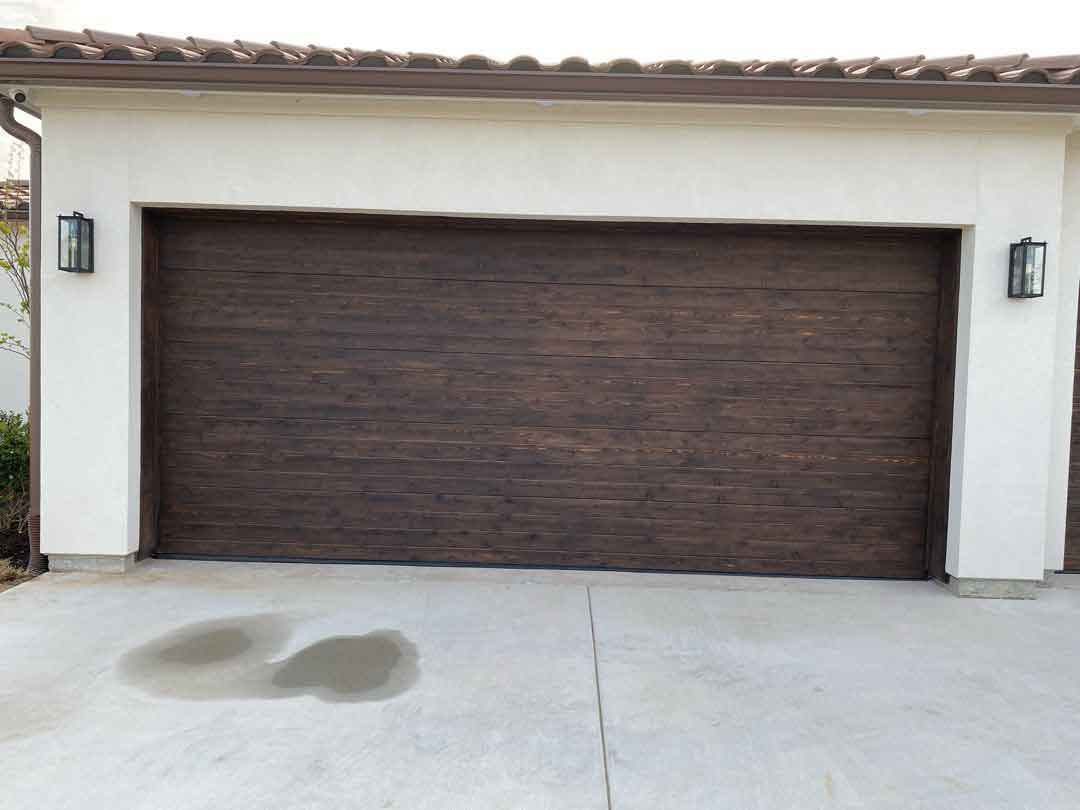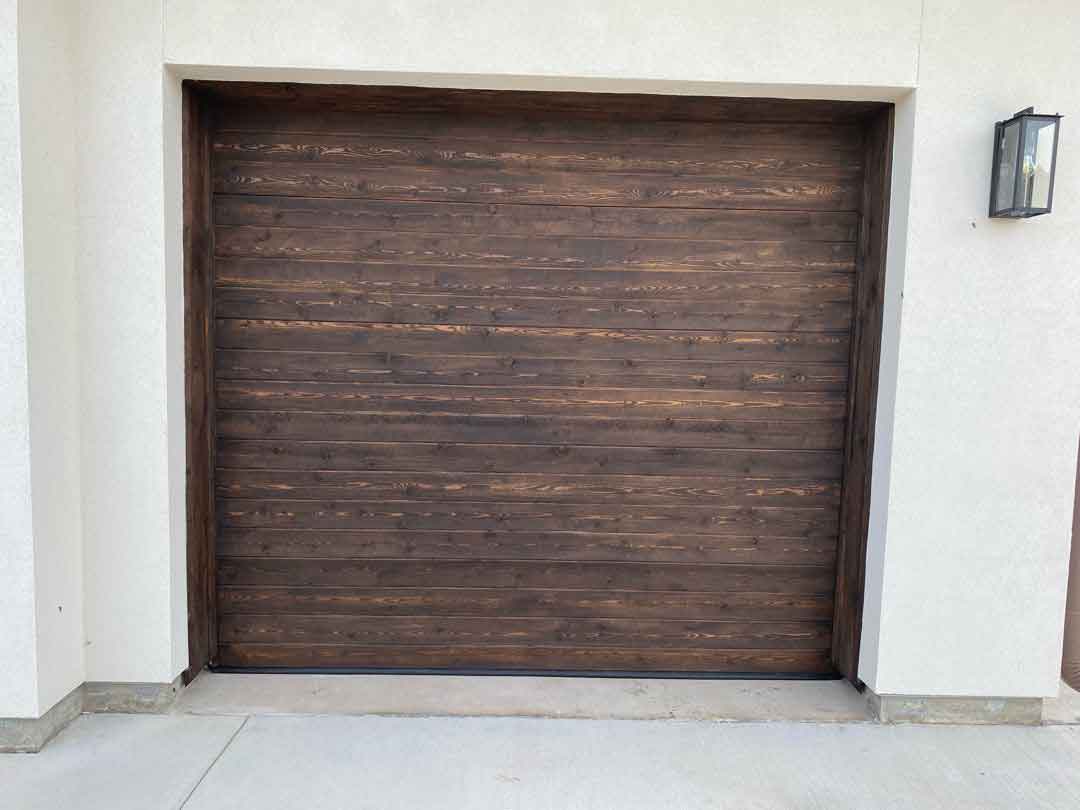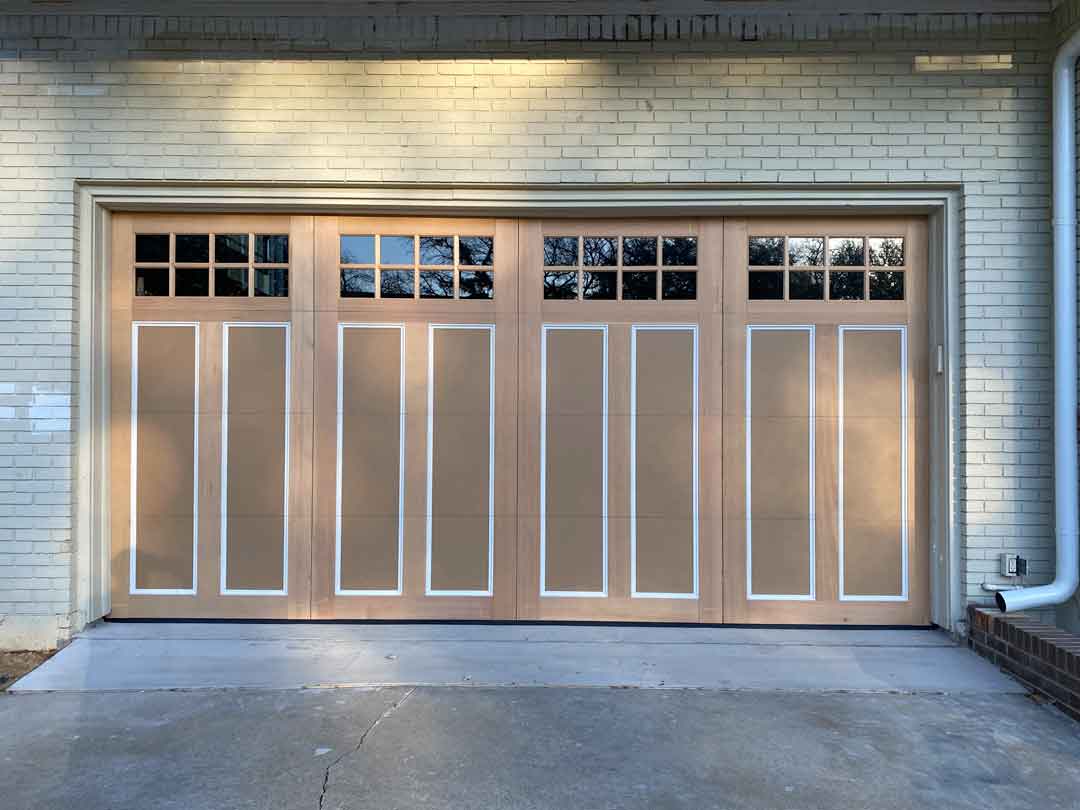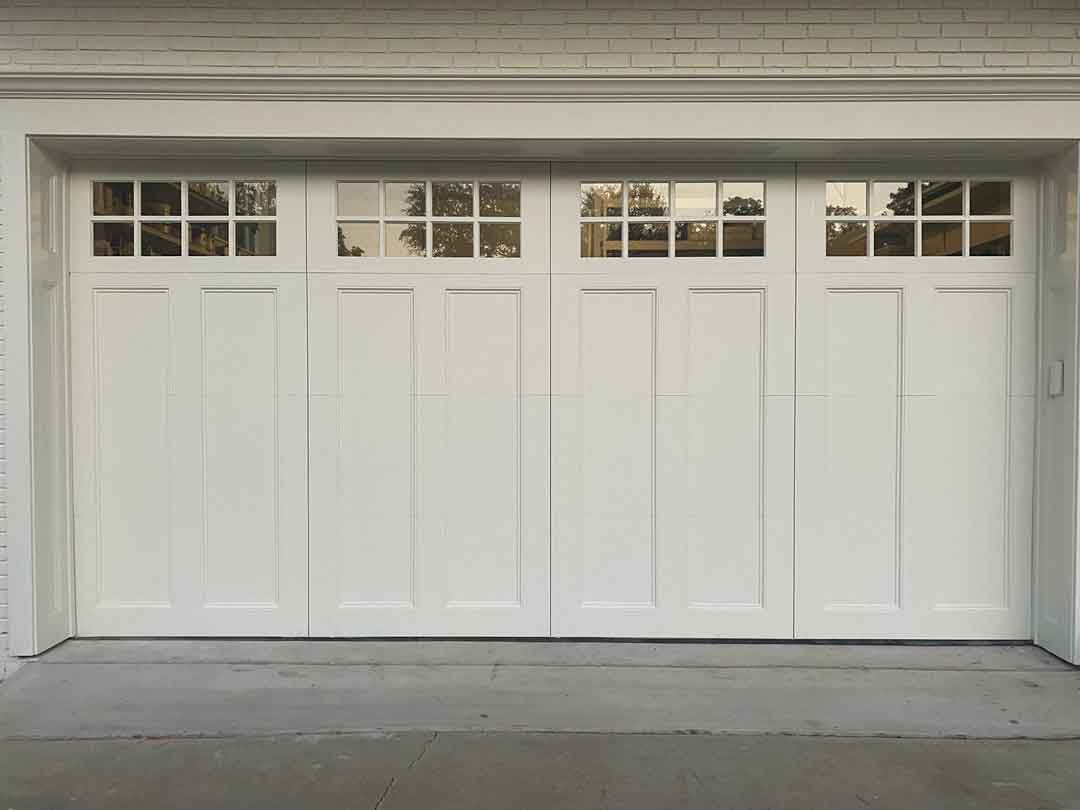A garage door is the most noticeable aspect of any home’s exterior, making it a perfect canvas to add personality and flair to your property. Even so, with numerous colors, stains, finishes, and materials available, selecting one that best complements your home’s architecture and style can seem daunting. This article discusses several things you need to know about garage door colors and brands to help you make an informed decision.
Standard Garage Door Colors
Most garage doors come in standard colors, including white, tan, and brown. For good reasons, white is a widely used base color for a new garage door. It is classic and timeless and brightens up the exterior of any drab-looking home while giving it a clean, polished appearance.
Beige or taupe is another popular base color for garage doors, giving your home a warm and inviting look. Homeowners can create a sleek and sophisticated look using a black garage door color that enhances a gray exterior. Matching the garage door to the color of the house’s trim or roof produces a more cohesive feature.
Is black a standard garage door color?
Black, charcoal grey and bronze are likely to be considered upgrades. For example, the Amarr Lincoln 1000 and 200 series garage doors are not available in black. However, if you upgrade to the Lincoln 3000 with a steel backing, the darker colors are available.
Tips on How to Choose the Perfect Garage Door Color
When selecting a garage door color, consider the exterior and style of your home, then pick a shade that unifies the overall look. Neutral colors such as white, beige, or gray are appropriate for a traditional home, whereas bold colors like black or red make a statement in modern houses.
Taupe is best suited for properties with a stone or brick façade, making it a pleasant neutral color over black and white hues. Using deep wood-tone colors on a home’s front doors, porches, and garage doors creates a sense of nature and calm. Further;
- Dark colors absorb up to 85% of the sun’s heat, while white garage doors soak up only 20-30%. Installing an insulated door helps protect your garage space from intense heat accumulation.
- Neutral colors, like brown, gray, white, and cream, universally appeal to prospective home buyers.
- Consider the garage door material. Wood grain’s intricate texture and rich character complement classic and contemporary architectural home styles. In contrast to wood, aluminum or steel garage doors are easier to maintain. They offer a modern look and are available in multiple textures. Steel and aluminum garage doors can be insulated with high-performance polyurethane that provides thermal-resistant values.
Garage Door Finish Options
Natural unfinished wood has a classic and rustic appearance but requires regular maintenance. Stained timber offers a more finished look but requires minimal maintenance.
Painted wood presents endless colorways to match any home’s color scheme. Steel is long-lasting and low-maintenance, but it may require repainting over time. Aluminum is a lightweight, rust-resistant, and low-maintenance material. Vinyl is ideal for coastal areas prone to salty air. Ultimately, your finish option depends on your style, maintenance preferences, and the weather in your area.
Amarr Garage Door Colors
Amarr garage doors are available in various colors, enhancing any home’s style and aesthetic appeal. They have over 20 color options, ranging from classic white and almond to bold shades of blue and green. The company also offers a Color Zone program that allows homeowners to choose a base color and up to three accent colors for a truly unique look.
Amarr also offers a Color Match option for homeowners who want to perfectly match their garage door to the exterior of their home. With so many options, Amarr steel and aluminum garage door colors can improve the overall visual look of any home.
These selected colors are standard for most but not all Amarr garage doors.
Clopay Garage Door Colors
Clopay Garage Doors offers innumerable colors and finishes to boost your home’s curb appeal and style. Select the perfect match for traditional, modern, or contemporary architecture from dozens of shades, hues, and color combinations. Some of Clopay’s most popular color options include white, almond, sandstone, desert tan, terra bronze, ultra-grain oak finish, and black.
You can also choose from various textures and patterns, like wood grain, stucco, smooth, and ribbed. Clopay’s specialized paints and coatings ensure your garage door colors remain vibrant and durable for many years, resisting fading, chipping, and peeling. With Clopay Garage Doors, you can make a statement while enjoying the convenience, security, and reliability of a high-quality garage door.
Garage Door Paint vs. Stain
Garage door stains and paint are both excellent options for updating the look of a dated garage door. Paint creates various colors and finishes while protecting the surface against moisture and weather damage. However, if the garage door is made of natural wood, some homeowners prefer a stain highlighting the wood grain’s beauty.
Stains also provide UV protection, hindering the wood from drying and cracking. Choosing between painting and staining your garage door is a matter of practicality, durability, and aesthetics.
Key Factors in Selecting the Perfect Garage Door Color for Your Home
Choosing the right garage door color is more than picking your favorite shade. It’s about finding a color that complements your home’s architectural style, exterior color scheme, and even the surrounding landscape. These factors become even more critical with its diverse architectural styles and climates.
1) Architectural Style
The architectural style of your home plays a significant role in determining suitable garage door colors.
- Traditional Homes: Classic colors like white, beige, or deep brown often work best for conventional homes. These colors create a sense of elegance and timelessness.
- Modern Homes: Bolder colors like black, gray, or striking red can make a statement in contemporary homes. These colors complement the clean lines and minimalist aesthetic of modern architecture.
- Spanish or Mediterranean Homes: Earthy tones like terracotta, deep brown, or even a warm yellow can enhance the charm of Spanish or Mediterranean-style homes. These colors evoke the warmth and rustic beauty of these architectural styles.
- Ranch-Style Homes: Neutral colors like gray, beige, or a natural wood tone can complement ranch-style homes’ casual and open feel. These colors create a sense of harmony with the surrounding landscape.
Remember, the goal is to choose a garage door color that harmonizes with your home’s architectural style, not clash with it.
2) Existing Exterior Colors
The colors already present on your home’s exterior are crucial in guiding your garage door color choice. You want a garage door that complements, not clashes with, the existing palette.
- Neutral Exteriors (White, Beige, Gray): If your home’s exterior is neutral, you have a lot of flexibility with your garage door color. You can wear a classic neutral for a cohesive look or add a pop of color for visual interest. A darker neutral, like charcoal gray or deep brown, can create a striking contrast.
- Warm Exteriors (Brick, Brown, Yellow): For homes with warm exterior colors, consider a garage door color that harmonizes with the existing tones. A natural wood tone, a deep brown, or muted green garage door can create a cohesive and inviting feel.
- Cool Exteriors (Blue, Green, Gray): If your home’s exterior features cool colors, a garage door in a similar calm tone can create a sense of harmony. Consider a deep blue, forest green, or charcoal gray.
- Bold Exteriors: If your home already makes a statement with bold colors, you can either echo that boldness with a vibrant garage door color or opt for a neutral to balance things out.
Pro Tip: Consider lighter colors for your garage door in Texas, where the sun can be intense. Dark colors absorb more heat, leading to higher temperatures inside your garage.
3) Curb Appeal and Visual Impact
Your garage door often takes up a significant portion of your home’s facade, so its color plays a significant role in curb appeal. Think about the visual impact you want to create.
- Subtle and Cohesive: If you prefer a subtle and cohesive look, choose a garage door color that blends seamlessly with your home’s exterior. This creates a sense of harmony and understated elegance.
- Statement Piece: If you want your garage door to stand out, consider a contrasting color that adds a pop of visual interest. This can be a great way to showcase your style and make your home memorable.
- Highlight Architectural Details: Use color to highlight interesting architectural details on your garage door. A contrasting color can draw attention to decorative elements, while a similar color can create a cohesive look.
- Size Matters: When choosing a color, consider the size of your garage door. Dark colors can make a large garage door feel even more imposing, while lighter colors can help it blend in more.
Remember: The goal is to enhance your home’s curb appeal, not detract from it. Choose a garage door color that complements your home’s style and creates a welcoming first impression.
4) Climate and Environment
The Texas climate and local environment also affect your garage door color decision.
- Sun Exposure: Texas is known for its abundant sunshine. Dark colors absorb more heat than lighter colors, leading to higher temperatures inside your garage. If your garage door receives a lot of direct sunlight, consider a lighter color to help keep things cool.
- Coastal Areas: Salt spray and humidity can be a concern if you live near the coast. Choose a garage door material and finish that can withstand these elements. Lighter colors may also be preferable as they show less dirt and grime than darker colors.
- Desert Areas: Dust and sand can accumulate on your garage door in arid regions. A lighter color may be a better choice, as it will not show the dust as much as a darker color.
- Natural Surroundings: When choosing your garage door color, consider the colors of the surrounding landscape. A natural wood tone or a muted green can blend beautifully with a wooded setting, while a warm beige or terracotta can complement a desert landscape.
5) Homeowners Association (HOA) Rules
Before choosing a vibrant turquoise shade for your garage door, it’s wise to check with your local HOA.
Think of them like the neighborhood’s style police – they often have rules about what colors are allowed to maintain a specific aesthetic throughout the community. You wouldn’t want to spend time and money on a paint job only to find out it doesn’t pass muster.
Checking with your HOA early on can save you a lot of hassle. They may have a list of approved colors or require you to submit your color choice for approval before you start painting.
It’s always better to be safe than sorry. A quick chat with your HOA can ensure your garage door project goes smoothly and keep you on good terms with your neighbors.
6) Personal Style and Preferences
While all the previous factors are essential, don’t forget to consider your style and preferences. After all, it’s your home, and you should love how it looks.
- Favorite Colors: If you have a favorite color, consider incorporating it into your garage door. Just make sure it complements the rest of your home’s exterior.
- Bold or Understated: Do you prefer a bold statement or a more understated look? Your garage door color can reflect your personality and design aesthetic.
- Trends vs. Timelessness: While following the latest trends is tempting, remember that trends come and go. Choose a color that you’ll still love years from now.
- HOA Restrictions: If you live in a community with a homeowners association (HOA), check their guidelines regarding garage door colors before making your final decision.
Ultimately, the best garage door color is one that you love and that makes you feel proud of your home. Don’t be afraid to express your style and create a space that reflects who you are.
7) Maintenance and Longevity
The color you choose for your garage door can also impact how much maintenance it requires and how long the finish will last.
- Dark Colors: Dark colors, predominantly black, tend to show dirt, dust, and scratches more readily than lighter colors. If you choose a dark color, be prepared for more frequent cleaning to keep it looking its best.
- Light Colors: Light colors are generally more forgiving when showing dirt and grime. However, they can also fade more quickly in the Texas sun. Consider a high-quality paint or finish with UV protection to help prevent fading.
- Glossy vs. Matte: Glossy finishes are more durable and easier to clean than matte finishes. However, they also show imperfections more readily. Choose a finish that suits your maintenance preferences and desired aesthetic.
- Material Matters: The material of your garage door can also impact maintenance and longevity. Steel doors are generally low-maintenance, while wood doors require more upkeep to protect them from the elements.
When choosing a color, consider how much time and effort you will put into maintaining your garage door. A low-maintenance color and finish can save you time and money in the long run.
8) Resale Value
While your preferences are necessary, it’s wise to consider the potential impact on resale value when choosing a garage door color. Neutral colors tend to have broader appeal and may attract more potential buyers. However, if well-executed and complementary to your home’s style, a unique or bold color choice can also make a positive impression and set your property apart. Ultimately, striking a balance between personal expression and market appeal is key.
9) Lighting and Shadows
How light and shadows interact with your garage door can dramatically affect its appearance. Consider how the sun hits your garage throughout the day and how artificial lighting illuminates it at night.
- North-Facing Garage Doors: These tend to receive less direct sunlight, so they may appear darker. Consider a lighter color to brighten up the space.
- South-facing garage Doors receive ample sunlight, so you have more flexibility with color choice. Both light and dark colors can work well.
- East and West-Facing Garage Doors: These receive direct sunlight at different times of the day, which can create interesting shadow patterns. Consider how the changing light will affect the appearance of your chosen color.
- Artificial Lighting: If you have exterior lighting near your garage, consider how it will interact with the color of your door. Warm lighting can enhance warm colors, while cool lighting can make cool colors pop.
10) Size and Proportion
Your garage door’s size and proportion to your home’s overall facade should also influence your color choice.
- Large Garage Doors: If your garage door takes up a significant portion of your home’s front, a bold color can create a striking focal point. However, a dark color can make a large door feel even more imposing. Consider a lighter color or a neutral tone to create a sense of balance.
- Small Garage Doors: For smaller garage doors, a lighter color can help them blend in and not appear dwarfed by the rest of the house. A contrasting color can help a small door stand out and add visual interest.
- Multiple Garage Doors: If you have multiple garage doors, consider using the same color for a cohesive look. You can also use contrasting colors to create a sense of rhythm and visual interest.
Remember: Don’t be afraid to experiment! Consider using online visualization tools or paint samples to see how different colors will look on your garage door. Consult with a professional designer or paint specialist for expert advice.
Additional Tips:
- Warm colors like brown or red can create a welcoming feel.
- Cool colors like blue or green can add a calming touch.
- Neutral colors like gray or beige offer versatility and longevity.
- Consider the garage door material (wood, metal, etc.) when selecting a color.
- Add visual interest with decorative hardware or accents in a contrasting color.
By considering these factors, you can confidently select the best garage door color to enhance your home’s overall aesthetic appeal and create a lasting impression.
Can You Paint a Garage Door Once It’s Installed?
Yes. With a bit of preparation, painting an already-installed garage door is the most effective way to give it an updated look. To begin, select a paint specifically formulated for your garage door material to ensure proper adhesion and to prevent paint from chipping or peeling over time. Secondly, clean the garage door thoroughly before painting to remove dirt or grime. Finally, apply the finish with a high-quality brush, roller, or spray gun for a smooth and even finish.
Conclusion
Always think about the overall aesthetic you want to achieve. Do you want your garage door to blend in or a pop of color that draws interest and makes a bold statement? Will color guidelines from your homeowner’s association (HOA) influence your garage door paint selection? With these factors in mind, you can pick the perfect color and amplify your home’s overall look and value while at it. Contact us at 817-500-5988 for a quote or questions about paint color and pricing. Our friendly team is here to help.
FAQs about garage door colors
What are the most popular garage door colors?
The most popular garage door colors tend to be neutral and timeless shades. Some of the most commonly requested garage door colors include:
- White
- Gray (various shades from light to charcoal)
- Beige/Tan
- Black
- Brown
- Dark Green
These colors work well with various home styles and siding materials, making them versatile choices.
How do I choose the right garage door color for my home?
When selecting a garage door color, consider the following factors:
- Match or complement your home’s exterior colors and materials
- Choose a color that blends with or accentuates the roof color
- Opt for a color that fits the architectural style of your home
- Pick a hue that coordinates with your landscaping and surrounding environment
It’s also a good idea to order color samples to see how the shades look in different lighting conditions before making a final decision.
Can I paint my existing garage door a different color?
Yes, you can paint your existing garage door a new color. This is a cost-effective way to update the look of your home’s exterior. Properly prepare and prime the door before applying high-quality exterior paint. It’s best to consult a professional painter to ensure proper adhesion and a long-lasting finish.
What are some trendy or unique garage door color ideas?
While neutral shades remain popular, some homeowners are opting for more bold or distinctive garage door colors, such as:
- Navy blue
- Hunter green
- Deep red
- Bright yellow
- Vibrant turquoise
- Black with white trim
These color choices can add visual interest and personality to a home’s exterior. However, if you ever plan to sell your home, be mindful that more unique colors may not have the same broad appeal.
How do I maintain the color of my garage door?
To keep your garage door color looking its best, be sure to:
- Clean the door regularly with a mild detergent and water
- Touch up any scratches, chips, or fading with matching paint
- Protect the finish with a clear sealant or topcoat every few years
- Avoid pressure washing, which can damage the paint over time
Proper maintenance will help your garage door color stay vibrant for many years.

